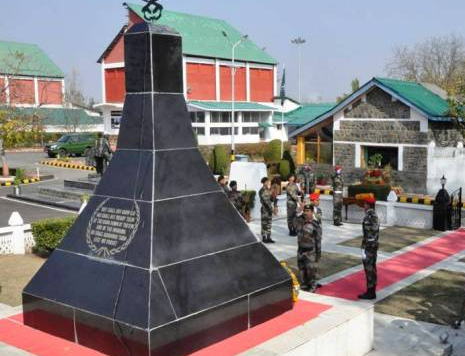SRINAGAR, Nov 7: Exactly 75 years ago, a fierce battle was fought in Kashmir’s Shalateng area that not only saved Srinagar from the onslaught of the Pakistani forces, but changed the face of the first Indo-Pak war of 1947-48.
Scripted in military history books as the ‘Battle of Shalateng’, the most decisive battle of the war, Indian soldiers and other bravehearts fought the adversaries and ”annihilated the enemy” on November 7, 1947. ”The headquarters of the Counter Insurgency Force (Kilo) today stands broadly on the site where the battle was fought exactly 75 year ago. It was the most decisive battle of the first Indo-Pak war, and it saved Srinagar and literally changed the face of the war,” a senior Army official of the CIF (Kilo) said.
The battle was preceded by dramatic events in October, barely two months after India’s independence on August 15, 1947.
Talks on Jammu and Kashmir integration with India was going on when on October 22, 1947, Kabailis from Pakistan side attacked the then princely state of Jammu and Kashmir.
Caught in a fix, Maharaja of Jammu and Kashmir Hari Singh signed the ‘instrument of accession’ on October 26, 1947, and a day after troops of the Indian Army’s 1 Sikh Regiment arrived at the old airfield of Srinagar (Budgam airfield), carried in Dakota aircraft, to protect Jammu and Kashmir from Pakistani forces.
According to official website of the Indian Army, the ‘Battle of Shalateng’ was fought nearly two weeks after the landing of the Indian Army at Srinagar airfield.
”On November 7, an aerial patrol reported a large concentration of tribesmen on the outskirts of Srinagar town at Shalateng village. This force was seen digging, prior to an assault on the town,” it said.
Prior to that on November 5, 1947, Brig L P Sen, Gen Kulwant Singh, commander of J&K Forces, planned a ”deceptive operation” and as part of this measure, 1 Sikh was withdrawn from Pattan to Srinagar, according to information shared by the Army officials on the battle.
The well-coordinated and executed operations on November 7 by 1 Sikh, 1 Kumaon, 4 Kumaon and a squadron from 7 Light Cavalry, supported by the Royal Indian Air Force (now IAF) strikes, changed the course of the war, in which Kashmiri citizens and soldiers of the Indian Army fought valiantly alongside to evict Pakistan forces, driving them out of most of Jammu and Kashmir till ceasefire on January 5, 1949, the official said. ”Having lost the race for Srinagar, Pakistan’s ambition of making a grand entry into Srinagar failed. At Shalateng, the Pakistan forces met their Waterloo — hundreds of enemy troops were killed or wounded, and the remainder headed towards Baramulla with utmost speed, with our troops close on their heels,” according to the information shared on the Army website.
The garrison housing the headquarters in Sharifabad area of Budgam district is called the Shalateng Garrison, in honour of the battle.
According to a plaque displayed at the CIF (Kilo) HQ, ”This is the place where the famous ‘Battle of Shalateng’ was fought, which became the turning point in the destiny of Kashmir. Consequently, the Kabailis were routed and Kashmir survived due to steadfastness and supreme sacrifice of our valiant troops and ‘awam’ of Kashmir. From there on, the tide turned and the Indian Army went on to the counter offensive to rout the invaders.” In 2004, the Sharifabad Garrison was rechristened as ‘Shalateng Garrison’, it says on the plaque, while another plaque displays a map of the battles fought.
A special mural was painted on a wall on the premises of the garrison last year depicting the historic battle, as part of the Azadi ka Amrit Mahotsav.
The mural shows a group of soldiers raising the tricolour, with ‘Battle of Shalateng- Most Decisive Battle of Indo-Pak 1947-48 War’ inscribed on top. Images of some of the heroes of this are also shown as part of the mural.
On November 7 last year, the Army had organised a unique light and sound show to re-enact the historic battle. (Agencies)
Trending Now
E-Paper


